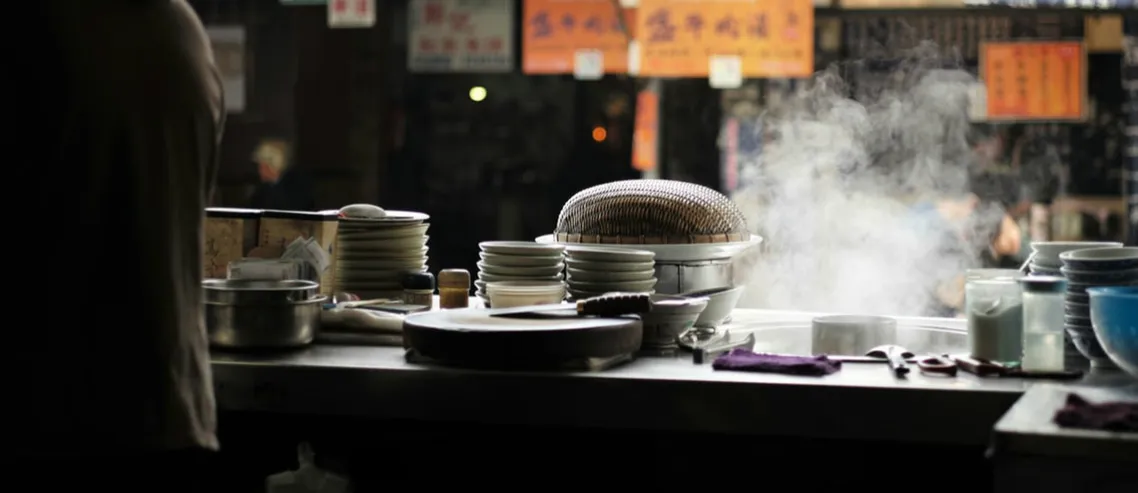Pad thai from a Bangkok street stall or raw milk cheese from a French bistro might taste amazing in the moment. But for many travelers, those local flavors that make trips special can sometimes lead to food poisoning—and the kind of vacation memories nobody wants.
According to a 2015 study in BMJ Clinical Evidence, food or water-related stomach bugs affect anywhere from 30 to 70 percent of travelers during or right after their trips. Every year, about one in six Americans and nearly one in 10 people worldwide get sick from bacteria (like E. coli, salmonella, or listeria), viruses (such as norovirus or hepatitis A), or parasites (including giardiasis, roundworms, and tapeworms).
While lower-income countries often get blamed for higher food poisoning risks, you’re just as likely to get sick from mishandled food in Italy or Australia—or even from sushi at your neighborhood grocery store.
What causes food poisoning?
There are 31 major known pathogens behind foodborne illnesses, including norovirus, salmonella, E. coli, clostridium perfringens, and campylobacter. Depending on the germ, symptoms can range from a few hours to a full week of diarrhea, vomiting, stomach cramps, fever, or body aches. The usual suspects? Undercooked chicken, turkey, or meat; raw milk; unwashed fruits and veggies; shellfish; and food left out in unsafe temperatures (like at an open-air buffet) or prepared in unsanitary conditions.
Sometimes, it’s the water making you sick. The CDC warns that tap water in over 180 countries—including hotspots like the Maldives, Mexico, and the Bahamas—is unsafe to drink. That means even brushing your teeth with local tap water or washing your hands before eating could lead to trouble.
“Giardia parasites are pretty common in contaminated water,” says Cindy Chung, a doctor at Kaiser San Rafael Pediatrics in California. “When a kid comes in with sudden diarrhea, I ask, ‘Been camping? At the beach? Traveled recently?’”
What should I do if I get sick?
There’s no instant cure for food poisoning. Most cases clear up once the bacteria or toxins are flushed out through diarrhea or vomiting. To ease the misery, doctors recommend staying hydrated and using over-the-counter pain relievers (like ibuprofen or naproxen) for cramps.
Since vomiting and diarrhea are your body’s way of kicking out toxins, only take anti-nausea or anti-diarrhea meds (like Imodium or Pepto-Bismol) if you’re stuck on a bus or plane without easy bathroom access.
For hydration, Chung suggests Pedialyte or low-sugar Gatorade. “Too much sugar can make vomiting and diarrhea worse,” she says. In severe cases—especially for kids or older adults—a doctor might prescribe ondansetron (Zofran) to reduce vomiting so you can keep fluids down.
If you’re too sick to travel, you might be able to reschedule. Some travel insurance policies cover food poisoning as a valid reason for flight changes. “But you can’t see a doctor after missing your flight and get a retroactive diagnosis,” says Michelle Couch-Friedman, a consumer advocate and columnist for The Points Guy.
How to prepare before a trip
Worried about getting sick? Check with your doctor or a travel clinic for meds or vaccines based on your destination. “We might give you a short course of azithromycin since E. coli is a common travel bug,” says Chung. “But we tell patients not to use it unless they see blood in their stool.” A hepatitis A shot can also protect against contaminated food or water.
To help prevent diarrhea, Mount Sinai experts suggest taking two Pepto-Bismol tablets four times a day before and during your trip. This advice comes from a 1987 study on students in Mexico, where Pepto’s active ingredient (bismuth subsalicylate) cut traveler’s diarrhea cases by about 60%.
“E. coli is usually the main culprit for traveler’s diarrhea, and the meds can help stop symptoms before they start,” says Michael Bolaris, an infectious disease specialist in California. Just know that bismuth subsalicylate might temporarily turn your tongue or stool black—harmless but weird.
Pack electrolyte powders, water purifiers, filtered bottles, hand sanitizer, and meds for nausea, diarrhea, and pain. Keep them in your carry-on in case you get sick mid-flight or your luggage gets lost.
And remember: Airplane bathroom water isn’t safe. “Washing your hands or brushing your teeth with it could introduce nasty germs,” says Couch-Friedman. “Bring bottled water into the bathroom instead, and use hand sanitizer—or you might speed-run your way to stomach trouble.”
Staying safe during your trip
Use the CDC’s Traveler’s Health tool to check if tap water is safe at your destination. Many hotels in risky areas have filtration systems or provide bottled water. But watch out for iced drinks at street markets or unwashed berries from roadside stands. When unsure, skip the ice and stick to sealed bottled water.
Trying to cut plastic waste? Bring a heavy-duty filtered bottle (like a Grayl) and fill it with boiled water (if your hotel has a kettle) or water treated with purification tablets (like Globaline or Potable-Aqua).
Sometimes, food poisoning happens simply because your body hasn’t built immunity to local germs. “Locals develop some tolerance after repeated exposure,” says Bolaris.
That doesn’t mean you should avoid street food in Southeast Asia or tacos in Mexico City. Bolaris’ rule? “If you can’t clean it or peel it, don’t eat it.” Chung adds: Watch how vendors handle food. “Are they using utensils, gloves, or bare hands?” When in doubt, go for piping-hot dishes—grilled meats, fried snacks—and avoid raw seafood or lukewarm stews.
Help might be on the way
Some companies are working on a norovirus vaccine—good news, since it sickens 700 million people yearly. Plus, new FDA Food Traceability Rules (coming in 2026) aim to reduce foodborne illnesses by making it easier to track contaminated foods (like cheese, produce, and seafood) through the supply chain.
